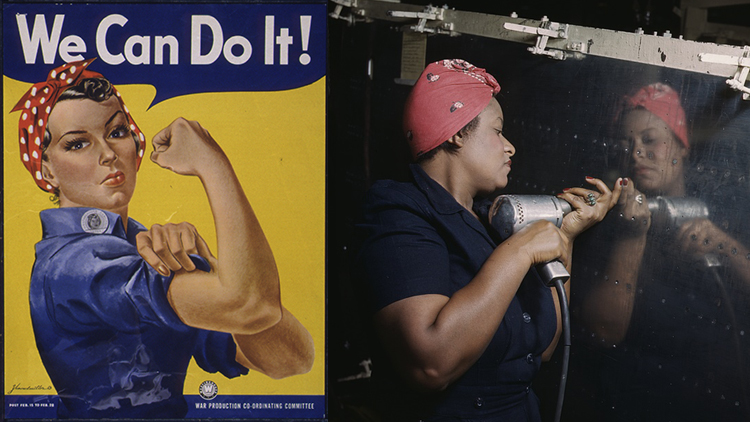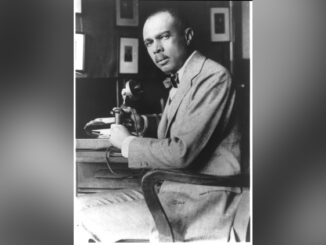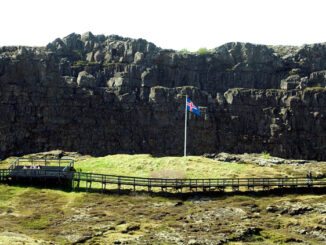
Her hair is pulled up inside a red scarf. Her sleeve is rolled up. Her arm looks powerful. Above her are the words “We Can Do It!” Have you seen this picture? It’s Rosie the Riveter. This famous image helped win a war. It also helped changed the course of women’s history.
During World War II many American men joined the armed forces to fight in the war. This meant there were few men left to work in factories. Who would fill that role? Women.
Before the war, most women worked only in their homes. During the war, hundreds of thousands of women began working in factories. They did important jobs like building airplanes to fight in the war. Women working in factories became very common. Redd Evans and John Jacob Loeb wrote a song about a factory worker called “Rosie the Riveter.” A riveter is someone who uses a tool to put airplanes together.
Rosie the Riveter became a character in posters that encouraged women to help during the war. The most lasting image of Rosie was drawn by J. Howard Miller. It was on a poster used to inspire workers at the Westinghouse Electric Corporation. The hard work of women across the country helped the United States win World War II.
After the war, many women continued to work in factories. The number of women working outside of the home has risen ever since. Today, women realize that they have limitless options for what they would like to contribute to the world. Years later, the image of Rosie the Riveter is used as a symbol to inspire women. It reminds them of the amazing things they can accomplish.
What Do You Think? What amazing things do you want to accomplish?
Photo Credit: (l)National Archives and Records Administration (NWDNS-179-WP-1563), (r)Library of Congress, Prints & Photographs Division, FSA-OWI Collection, [LC-DIG-fsac-1a35371]



